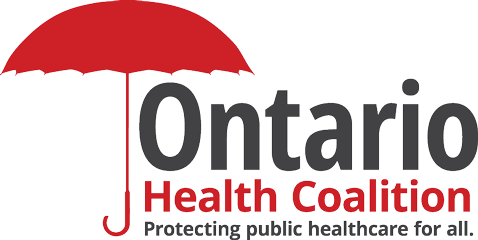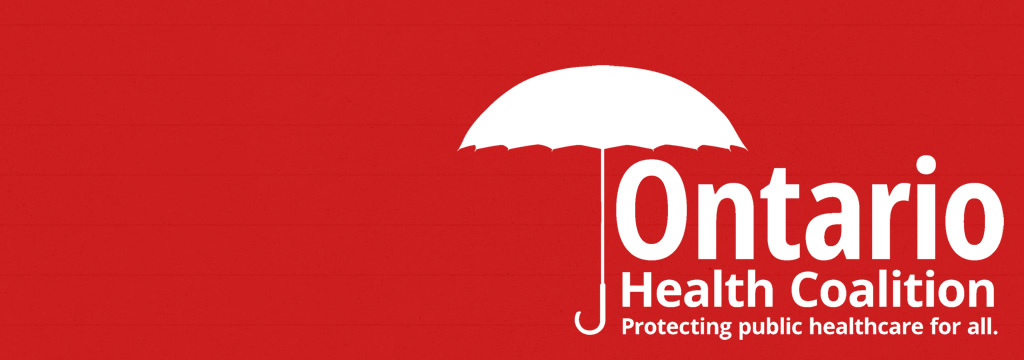Hamilton hospitals relying on lines of credit amid budget crisis
Posted: April 9, 2025
(April 9, 2025) By: Joanna Frketich, The Hamilton Spectator
Hamilton’s largest hospital network is short about $40 million and has been using commercial operating lines of credit.
It is the fourth year in a row Hamilton Health Sciences (HHS) has had a projected deficit on its roughly $1.6-billion budget at the end of the fiscal year on March 31.
“Like most Ontario hospitals, Hamilton Health Sciences is facing a rising demand for care and higher costs,” HHS said in a statement. “This includes substantial increases to labour costs … medical supplies, equipment, food, energy, and drugs.”
The budget woes at HHS — originally projected to be a $112-million deficit — resulted in the hospital network doing a review of all vacant positions that is expected to continue until May 1, despite an unprecedented staffing crisis, with at least 922 unfilled jobs as of March.
The Canadian Union of Public Employees (CUPE) has accused HHS of leaving positions vacant to balance the budget.
“They were eliminating jobs through hiring freezes,” said Michael Hurley, president of CUPE’s Ontario Council of Hospital Unions. “The consequence of that would be staff shortages. The effects will be profound in terms of reduced patient safety and unsustainable workloads for employees.”
Other area hospitals also finished the year with a shortfall, including Brant Community Healthcare System (BCHS), Norfolk General Hospital in Simcoe, West Haldimand General Hospital in Hagersville and Haldimand War Memorial Hospital in Dunnville.
St. Joseph’s Healthcare and Burlington’s Joseph Brant Hospital (JBH) both finished with a surplus; however, the Ontario Hospital Association (OHA) says they are in the minority for the fiscal year that ran from April 1, 2024 to March 31, 2025.
“Most hospitals were in a projected deficit situation,” said Melissa Prokopy, vice-president of policy and advocacy at OHA. “The same is true for the fiscal year that’s just starting.”
Deficits have been the norm for a number of years now, said Prokopy, and continue despite the province allocating a four per cent increase in base funding — about $965 million — for hospitals in the budget in March. The government gave a further $850 million bump to base funding in December.
“This is a pretty wicked and complex problem and it hasn’t emerged overnight,” Prokopy said. “It’s a byproduct of higher cost structures since the beginning of the pandemic, huge changes with demographics … and overall growth in expected service volumes.”
The Ministry of Health did not respond to questions regarding the deficits.
But unions say hospitals need stable multi-year funding, pointing out that nearly half of the increase didn’t come until more than eight months into the fiscal year.
“The hospital never knows from one quarter to the next what its financial position is,” Hurley said. “It’s ridiculous.”
Hallway medicine is a daily occurrence at HHS, said Hurley, making it “clear that there’s a shortage (of funds) and that further cuts would be harmful.”
“The bottom line is they’ve held hospital funding at below inflationary rates and only announced funding at the end of the year,” said Natalie Mehra, executive director of the Ontario Health Coalition. “It didn’t flow in time for them to be able to hire staff and stop the bleeding of money into overtime and for-profit staffing agencies.”
HHS — like many hospitals — has not been alerting the public about its mounting deficits that were $20.4 million for 2023-24, $31.1 million for the year before and $900,000 for 2021-22.
“These financial pressures carry over each year,” HHS stated. “We’re working directly with government to achieve a balanced budget and are making progress.”
Audited financial statements for the last fiscal year have not been completed, but area hospitals provided their projections.
BCHS had a deficit of about $10.6 million. The hospital network that includes Brantford General Hospital and the Willett Urgent Care Centre in Paris said in a statement the shortfall was due to the rising costs of supplies, medication, equipment and staff. Population growth and increased demand for care also brought financial strain.
It is the third year in a row the hospital network has had a deficit after finishing 2023-24 short $2 million on its roughly $220-million operating budget and ending the fiscal year before that with a deficit of $1.5 million.
“Our commitment to delivering exceptional care is unwavering, and we are determined to identify ways to be more cost-effective while maintaining our high standards,” BCHS said in a statement.
Norfolk General finished the last fiscal year short about $3.2 million and West Haldimand had a deficit of around $2 million on their combined operating budget of roughly $84.5 million. It is the second year in a row Norfolk General had a shortfall and the fourth for West Haldimand.
Haldimand War Memorial Hospital has also had four shortfalls in a row, including a projected $190,000 for the last fiscal year.
St. Joseph’s started out the fiscal year with a projected deficit of $24.3 million, but finished with a surplus of about $1.13 million on its $800-million budget. It also had a surplus the year before.
“This improved forecasted position is due to higher-than-expected investment income as well as funding settlements,” St. Joseph’s said in a statement. “We will continue to work with the Ontario government to ensure the long-term financial sustainability of St. Joe’s.”
JBH also finished the year with a surplus on its roughly $268-million budget, but refused to provide the amount. The Burlington hospital said in a statement that the extra cash was for growth after the hospital’s expansion in 2018, but the added funding ends in the current fiscal year.
“Like many hospitals in Ontario, JBH continues to face operational and financial pressures due to increased demand for hospital care and higher costs,” JBH said in a statement. “We will continue to look at ways that we can be more cost-effective.”
Click here for the original article


